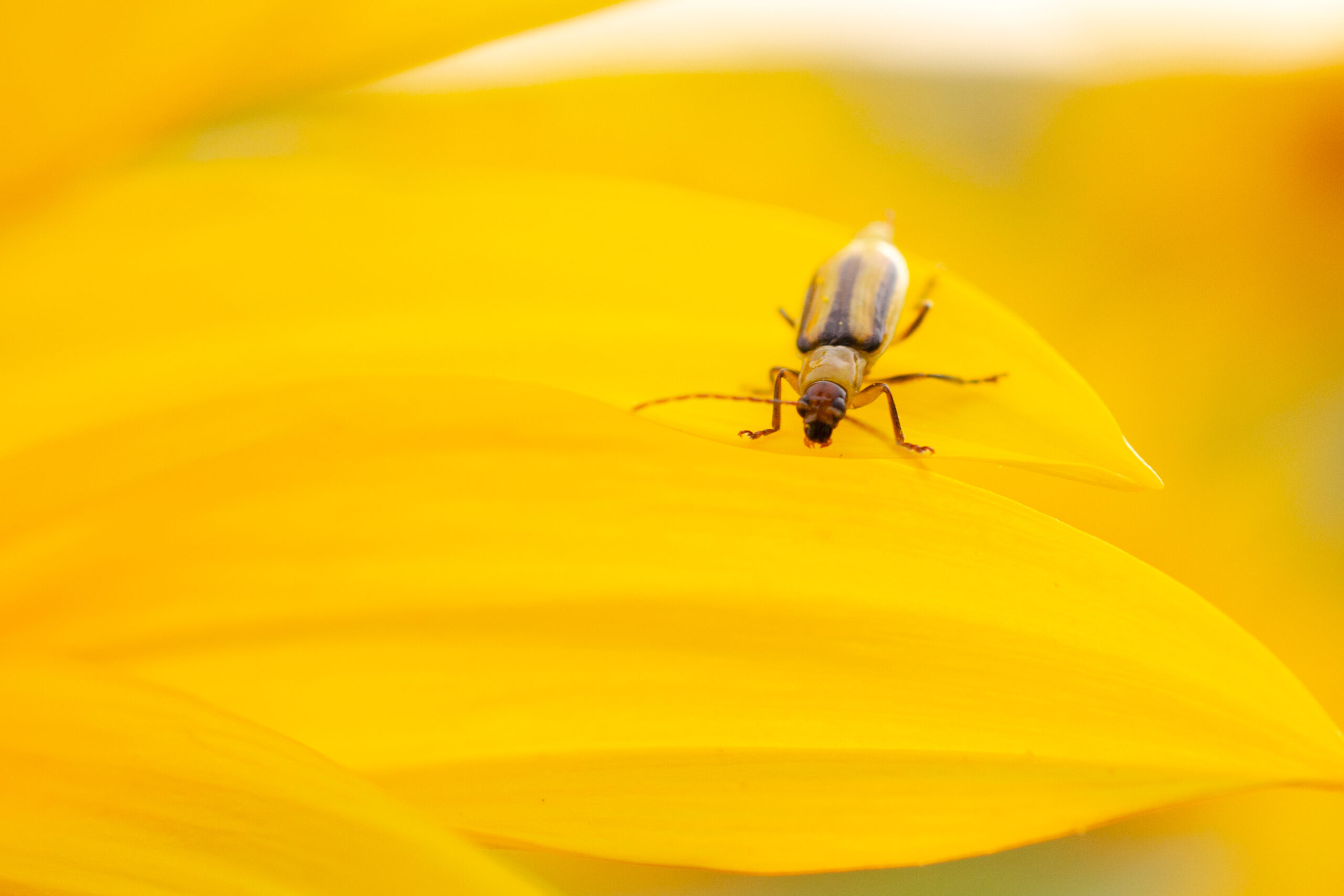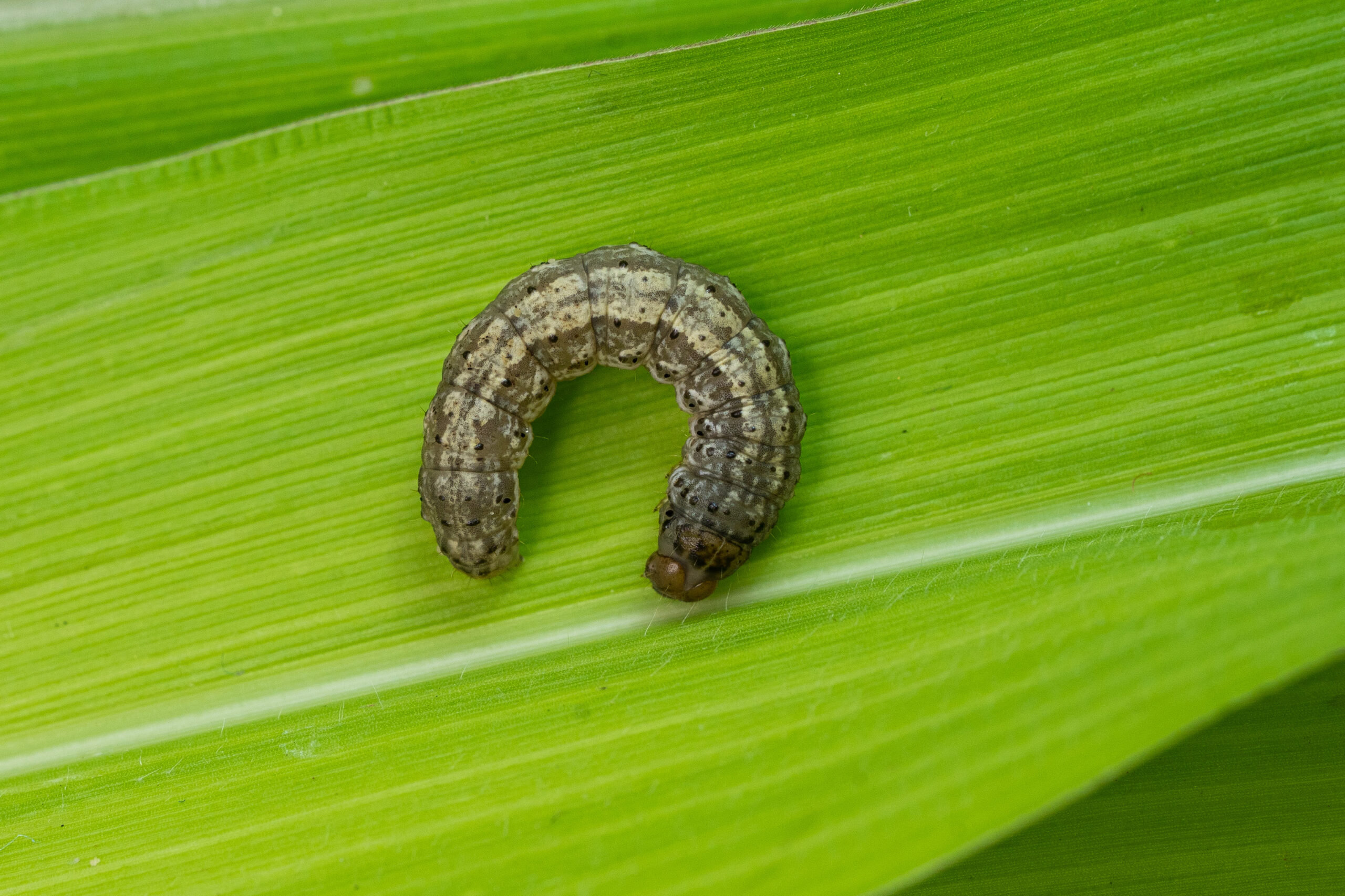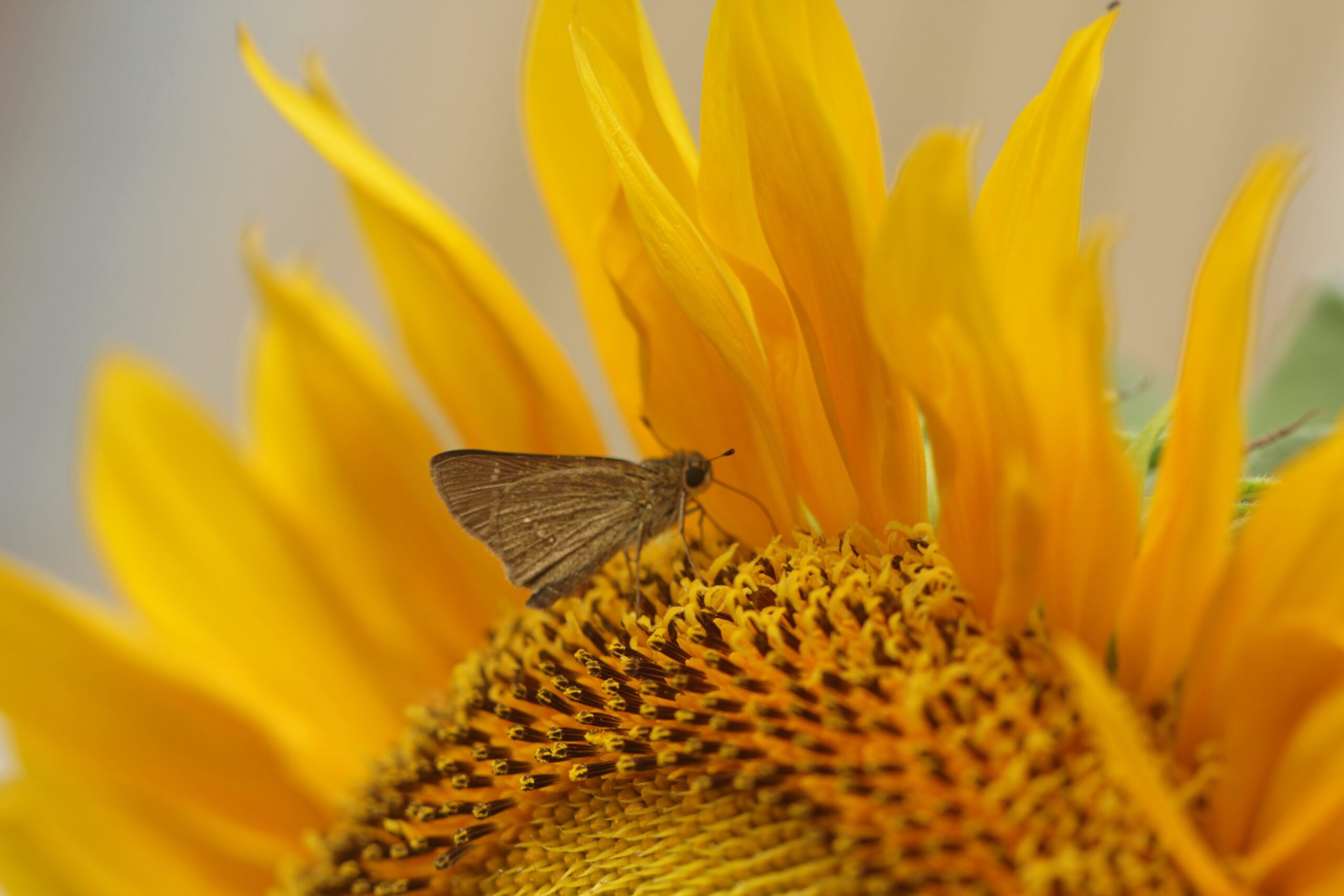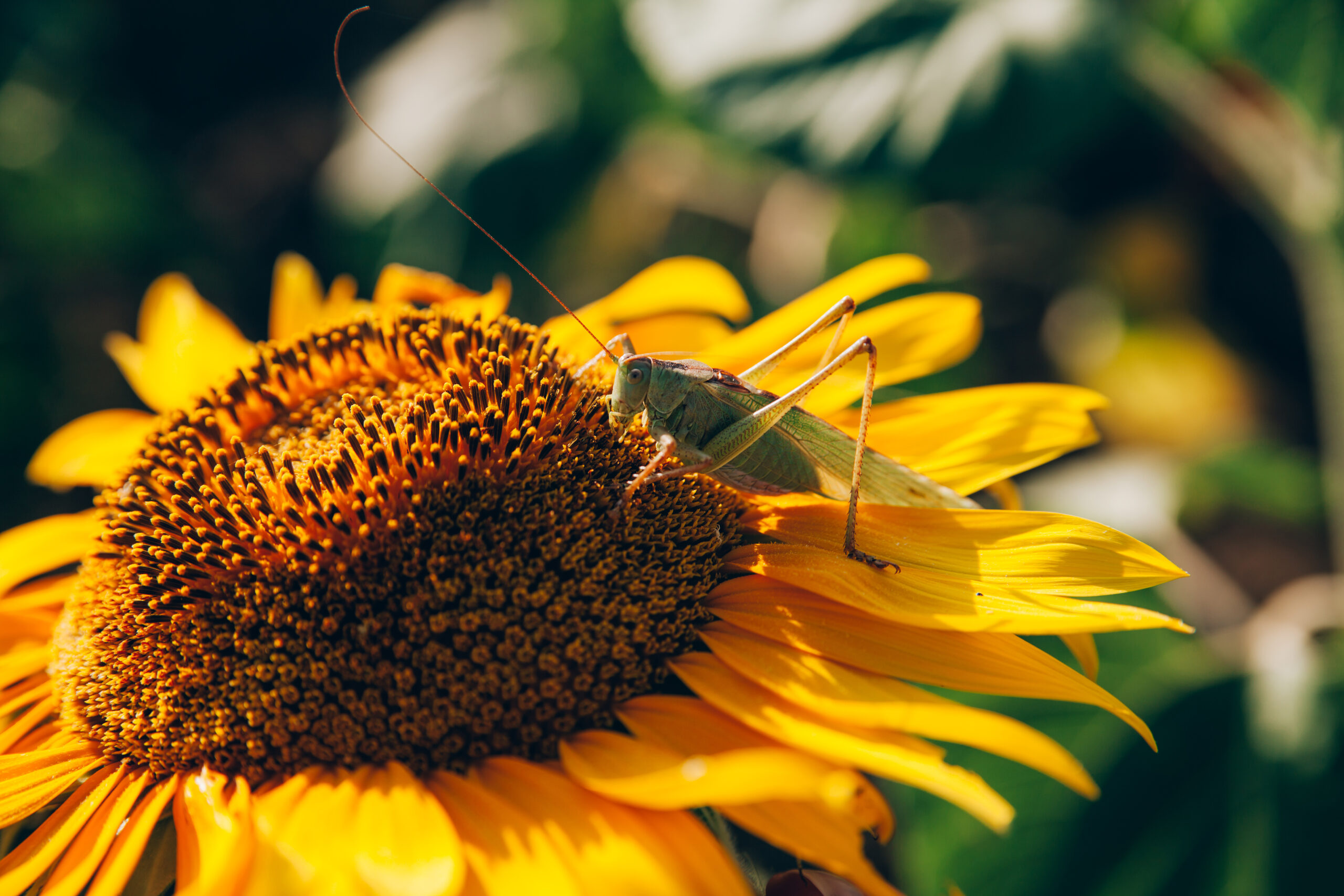5 Sunny Sunflower Pests
5 Sunny Sunflower Pests
It is no secret that pests love plants both as a habitat and a food source, but some plants are more popular than others within the pest world. Flowers are most often visited by pollinating insects, like bees and butterflies, due to their production of nectar and pollen. Since flowers come in all shapes and sizes, there is a wide variety of pests that visit these beautiful blooms. One type of flower that is notably easy to grow and maintain is the sunflower. We enjoy them for their sunny coloring and delicious seeds, but there are a number of pests that love these flowers for the nutrients and shelter they provide. Let’s look into the lives of five pests who are drawn to sunflowers for their own reasons.
Sunflower Beetles

One of the two pests on this list that is named after the flower they favor, the sunflower beetle is a destructive pest for any sunflower. They are only 6 to 8 millimeters long, so these beetles may be difficult to spot at a glance. Sunflower beetles are cream-colored with dark stripes running down their backs. Since they don’t lay eggs before winter sets in, they only produce one new generation per year. They will emerge in May to begin feeding on sunflowers, and when they do lay eggs, sunflower beetles will place them on the underside of sunflower leaves and stems when the weather is still warm. This gives the larvae a food source as soon as they hatch.
Sunflower beetles are so detrimental to these flowers because they are known to defoliate the plants. This means that the beetles eat from a sunflower so much that the plant will lose many of its leaves. If the beetles feed upon a specific flower for enough time, it can stunt the sunflower’s growth and eventually kill it if they are not removed. Many photosynthesis cells are in the leaves of a plant, which means that the loss of leaves will lead to the plant being unable to convert light to energy and therefore dry up. Sunflower beetles will eat flowers of any size, but they deal more damage to younger sunflowers since the plants are more vulnerable when they are small. The general feeding pattern is that adult beetles just eat the edges of the sunflower leaves, while sunflower beetle larvae will devour whole leaves since they eat more to eventually grow into adults and repeat the processes next year.
Cutworms

These larvae do not limit their meals to just sunflowers, which explains why they are a dreaded garden pest for anyone who cares about their greenery. Cutworms are nocturnal and hide within the soil during the day, so they are difficult to find unless you dig through the soil around plants. The results of their feedings are often found in the morning when the garden-owner finds their plants wilted and housing some sharp cuts. One cutworm is not enough to devastate a garden, but if enough of them are in one concentrated area, it will be extremely difficult for the plants to recover.
Cutworms are technically the larvae of brown moths, but they are much more destructive than their adult forms. Adult moths eat the leaves and flowers of crops, which is still not ideal, but it would take much longer for them to ruin a garden than for cutworms to do so. Cutworms get their name from their feeding process of eating (or cutting) holes in the stems and leaves of plants. Since sunflowers are so tall in their final state, cutworms favor younger flowers for their weakness and short stature. Cutworms will chew through the stem before moving on to the foliage of the flower. At best, the pests will just stunt the growth of the flower and render it weaker than its surrounding blooms. But at worst, cutworms can kill the plant by starting at the base and working its way up through the flower’s vital components.
Spiders

This is the only pest on the list that does not rely on sunflowers as a food source…technically. Spiders generally eat small insects and critters, and they need to live in a spot that gets a lot of activity from their prey. If spiders do not have a steady food source, they will not last very long. Since sunflowers receive so many tiny visitors, as made evident by this blog, spiders have plenty of meals to choose from when they set up shop. But besides the general benefit of having plenty to eat, spiders like sunflowers because these tall flowers act as a solid base upon which to craft their intricate webs.
Since spiders are often seen hiding in their webs in the upper corners of a room or doorway, it makes sense that they would like to live on some of the tallest flowers. They will stick their webs to the stalks of the sunflower to be on the tallest point that is also sturdy enough to withstand the movement. Some species will live on the head of the sunflower since their coloring allows them to blend in with the brown and yellow hues. Also unlike the other pests on this list, spiders do not generally damage the sunflower with their presence. Since they don’t eat any part of the flower, they don’t harm it anymore than the pests who actually do munch on the flowers. But there is a risk if you are bringing some fresh-cut sunflowers indoors to brighten up a room. Since spiders are experts at hiding within the crevices of their shelters, they can be accidentally brought inside on the sunflower they inhabited. Make sure to check each flower before transferring it inside, just to be sure that you aren’t unknowingly inviting a spider inside your home!
Sunflower Moths

Sunflower moths are yet another pest that is so known for its targeted sunflower diet that it is named after its favorite food. These moths are silver in color and about half an inch long. Although they don’t overwinter, sunflower moths are considered to be the most destructive and widespread sunflower pests of all. They eat from sunflowers during both their larval and adult stages, so a group of sunflowers that has sunflower moth eggs will not be healthy as long as those moths are around. Speaking of, these eggs are laid at the base of the flower, making it easy for every life stage to munch on the growing flowers.
Although all life stages of the sunflower moth enjoy sunflowers, they focus on different areas depending on the age of the pests. The larvae stick with the leaves and flower petals, and will gradually chew them down to jagged edges. Adult sunflower moths like to eat from the center of the sunflower, often called the “head” of the sunflower. This is where those tasty sunflower seeds come from, but there may be a lot less of those if the sunflower moths infest the flower first. When these moths develop from pupae to adults, they go to the base of the plant and bury themselves in leaf litter for protection. It is easier to spot a moth on a flower than a grub mixed in with the soil. Besides the fact that these moths can drain the flower of life from constant feedings, they can have an indirect impact on the flowers later on. Pollinating insects will hardly ever visit drained or droopy flowers, which means the sunflowers will not receive the pollination they need to continue growing and expanding the surface area of their group.
Grasshoppers

Despite their name, grasshoppers are no friend to grass or any kind of plant. Also known as locusts, these pests can destroy a field of crops if they are not controlled. This is why they are the usual suspects when the sunflowers in a yard suddenly begin to wilt and grow unhealthy. One or two grasshoppers is not awful, but the huge swarms of millions of grasshoppers are immediate threats to any crops in the area. Fortunately, this size of a swarm is not very common in populated areas, and seems to be more typical in massive fields and deserts. But a group of grasshoppers is enough to ruin a garden and cause the homeowner to put all their energy into saving their plants rather than simply tending to them.
Just like sunflowers themselves, grasshoppers are more abundant in hot and dry weather. They will flock to sunflowers if they are in the area, and the grasshoppers typically start on the outside of the flower and work their way inside. They will eat through the leaves and petals with ease, then feed upon the “head” of the sunflower and render it completely ruined. If there are multiple species of plants and flowers in an immediate area, they will be more likely to have grasshoppers since they have plenty of food to choose from. These insects lay their eggs in soil, so they need to stay close to plants throughout their lives anyway. It is not the end of the world to see one grasshopper in the yard, as they can just be pausing during their travels. But if you see multiple grasshoppers on sunflowers and other plants, there is a major invasion occurring.
Give Life Back to Your Garden with Green
These sunflower pests don’t pose any health risks to humans, but they can certainly deal some damage to a garden. When they invade in large numbers, especially when the flowers and plants are young, these pests can drain plants of life seemingly overnight. One of the easiest methods to keep the greenery free of pests is to keep the area free of weeds and leaf litter. When pests don’t have overgrown foliage to hide within, they will not want to stick around as much. Plus, weeding the yard will benefit the health of your plants too!
When you want to kick pests out of the yard for good, Green Pest Services is the best choice for every season. Our technicians begin every visit with a thorough inspection to search for any signs of damage, entry points, eggs, and live pests. We will not leave any pest problem unaddressed, and our treatments are effective in preventing pests during every life stage. Since we only use eco-friendly products, you can be sure that your plants will be safe while the treatments prevent future pests or eliminate existing pests plaguing the yard. Contact us to learn more about how we can keep your beautiful gardens free of hungry pests that would rather devour your flowers than admire their beauty.
Citations
Brand, A. (2021, September 24). The not-so-sunny sunflower moth. Coastal Maine Botanical Gardens. Available at https://www.mainegardens.org/blog/the-not-so-sunny-sunflower-moth/ (Accessed on February 13, 2023).
Charlet, L.D. & Brewer, G.J. (n.d.). Sunflower insect pest management in North America. University of Minnesota. Available at https://ipmworld.umn.edu/charlet (Accessed on February 10, 2023).
Dekker, S. (2021, May 17). How to identify and control common sunflower pests. Gardener’s Path. Available at https://gardenerspath.com/how-to/disease-and-pests/sunflower-pests/ (Accessed on February 10, 2023).
Deziel, C. (2022, June 10). How to treat sunflower pests. Hunker. Available at (Accessed on February 10, 2023).
Grasshopper watch. (2021, July 1). Nuseed United States. Retrieved February 13, 2023, from https://nuseed.com/us/sd-grasshopper-watch/
Hogan, A. (2021, September 9). This popular flower could be bringing spiders to your home. BestLife. Available at https://bestlifeonline.com/sunflowers-spiders-news/ (Accessed on February 13, 2023).
Iseli, D. (n.d.). What is eating my sunflower leaves? 9 worst pests. Plantophiles. Available at https://plantophiles.com/plant-care/what-is-eating-my-sunflower-leaves/ (Accessed on February 10, 2023).
Larum, D. (2023, February 7). Effects of defoliation – What to do for defoliated plants in the garden. Gardening Know How. Available at https://www.gardeningknowhow.com/plant-problems/environmental/effects-of-defoliation.htm (Accessed on February 13, 2023).
Tilley, N. (2021, March 23). Learn more about sunflower problems. Gardening Know How. Available at https://www.gardeningknowhow.com/ornamental/flowers/sunflower/sunflower-problems.htm (Accessed on February 10, 2023).
Varenhorst, A. (2021, October 8). Watch sunflowers for grasshopper defoliation and flower feeding. South Dakota State University Extension. Available at https://extension.sdstate.edu/watch-sunflowers-grasshopper-defoliation-and-flower-feeding (Accessed on February 13, 2023).
Pests That Invade Packages & Boxes: How to Prevent Hidden Infestations
Pests That Invade Packages & Boxes: How to Prevent Hidden Infestations Pests That Invade Packages & Boxes: How to Prevent Hidden Infestations Summary: [...]
Keep Pests Out of Your Holiday Gatherings
Keep Pests Out of Your Holiday Gatherings Keep Pests Out of Your Holiday Gatherings Summary: The holiday season is all about good food [...]
Cold Weather vs. Warm Weather Infestations: How Temperature Shapes Pest Activity
Cold Weather vs. Warm Weather Infestations: How Temperature Shapes Pest Activity Cold Weather vs. Warm Weather Infestations: How Temperature Shapes Pest Activity Summary: [...]
Garden Pests Do Not Hibernate Indoors – How They Attack Houseplants And What To Do
Garden Pests Do Not Hibernate Indoors – How They Attack Houseplants And What To Do Garden Pests Do Not Hibernate Indoors – How They Attack [...]
The Scariest Pests (And Why They Freak Us Out)
The Scariest Pests (And Why They Freak Us Out) The Scariest Pests (And Why They Freak Us Out) Summary: A practical, homeowner-friendly guide [...]
Favorite Foods of Rats and Mice
Favorite Foods of Rats and Mice Favorite Foods of Rats and Mice Summary: Rats and mice are surprisingly picky about what they eat—especially [...]

